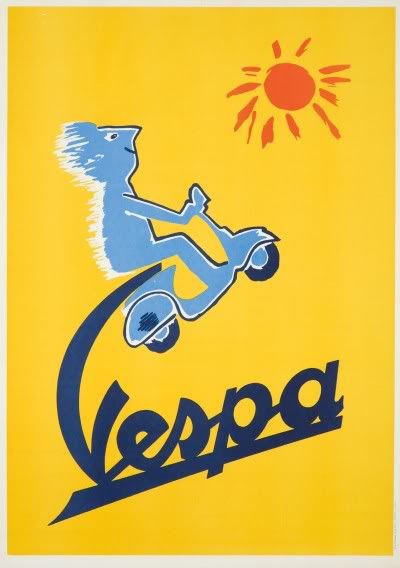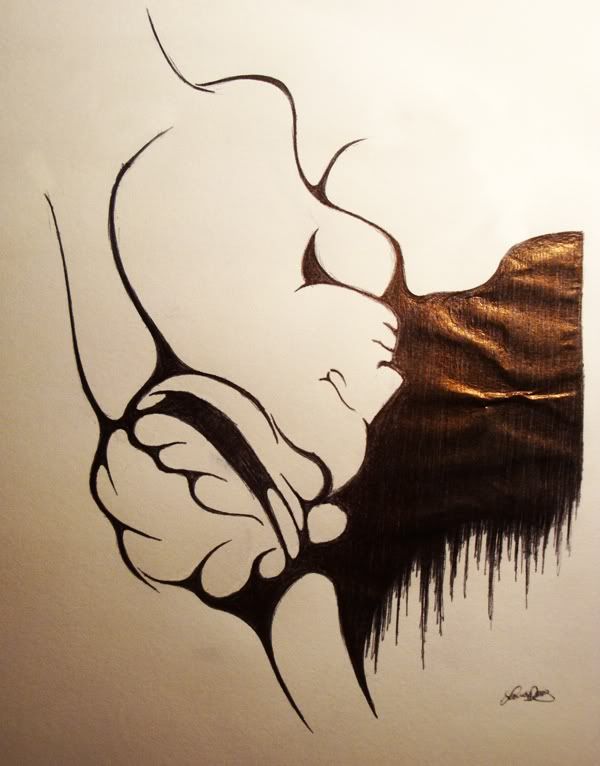Piaggio Museum, Pontedera, Firenze - Wednesday, June 1st, 2011
Alan, Michelle, Lindsay
Wednesday, June 1, 2011
Ceramic Production at Richard Ginori
Richard Ginori, Florence - Wednesday, June 1st, 2011
For the most of us who have taken mass pro, I think we all agree that Richard Ginori should be a priority stop for the 2nd year Spring trip (if not just to come to Florence). As for Remi and Justine, they are the two lucky first years that got a glimpse at the mass production of ceramic products. Well, we were all lucky to see behind the scenes in this expansive manufacturing plant.
For the most of us who have taken mass pro, I think we all agree that Richard Ginori should be a priority stop for the 2nd year Spring trip (if not just to come to Florence). As for Remi and Justine, they are the two lucky first years that got a glimpse at the mass production of ceramic products. Well, we were all lucky to see behind the scenes in this expansive manufacturing plant.
Here's a little summary of what we saw:
Rotating mechanisms hold plaster molds which are filled manually with ceramic "slip". The molds must be constantly rotating as the centrifugal motion ensures even wall thickness.
Labels:
Companies
Unusual Scale
Veronica Bogoa, a professor at ISIA, pointed out some elements that make a design stand out and catch people's attention:
1. Opposites
2. Repetition
3. Change of Materials
4. Unusual Environment
5. Unusual Colour
6. Fusion
7. Unusual Scale
8. Similar
9. Movement
10. Weight
11. Relations (Place vs. Dimensions)She's challenged us to look our for examples of these elements during our stay in Italy (just another hunt for us), so we're keeping our eyes open. Here's an example of the seventh element that we found at the Piaggio Museum, where we got to see so many Vespas!
Richard Ginori - Traditional Production Processes
Richard Ginori - Wednesday, June 1st, 2011
Traditional production processes at the Richard Ginori manufactory
The Doccia porcelain manufactory, Richard Ginori, formerly known as Doccia Porcelain, was founded in 1735 by Carlo Ginori. Our visit gave us a glimpse of its long and rich history, being the first European factory of porcelain that has been in operation since 1737.
The most exciting part was when we got to see the manufacturing process in action. Prior to stepping foot into the factory, and considering the huge developments in technology from the past few decades, one would think that their processes would have altered considerably. However, the very opposite applies. Richard Ginori has maintained their traditional methods of moulding and applying decorations to their products. Almost all applications of decoration are applied by hand, a skill that takes over 10 years worth of experience and training to achieve the quality that the company exhibits. It's no wonder a single ceramic plate could cost up to 1,000 euros! Just as the deco are applied by hand, moulding roses (as illustrated in the video above) is also done in a specific way so that the final product will pertain to the image the company holds. The production of these beautiful pieces will always be done via traditional methods, as claimed by the curator of the Richard Ginori museum, Oliva Rucellai. At the end of the day, I can only admire the skills of the employees and their amazing level of patience in maintaining such traditional practices.
- Alan, Michelle, Lindsay
Keywords: Tradition, Experience
- Alan, Michelle, Lindsay
Keywords: Tradition, Experience
Labels:
Companies
Vespa: A Cultural Phenomenon
Piaggio Museum, Pontedera, Firenze - Wednesday, June 1st, 2011
Youth, adventure, style, modernity: words evoked by the sleek and elegant form of a Vespa scooter. For over 50 years, this two-wheeled vehicle has been known as an icon to generations and a symbold of Italian design. How did a design based on function and accessibility become such a cultural phenomenon?
The Little Scooter That Could : Vespa
Piaggio Museum, Florence- June 1, 2011
Practical, sleek and effortlessly glamourous, Piaggio's Vespa is the epitome of classic Italian design. Since its birth in the 1940's, the Vespa has held its place as one of the most iconic vehicles the world has ever seen. An instant phenomenon, Vespa was unlike anything that had ever come before it, and is still unlike anything that has attempted to succeed it. Renowned for its comfort, convenience and innovative form, Vespa revolutionized travel for commuters across Europe, and subsequently, across the planet.
A Sketch From Richard Ginori
Richard Ginori, Florence - June 1, 2011
Pictures of the statues being made at Richard Ginori.
- Laura M, Jessica and Kelvin
Labels:
Companies
Richard Ginori: Keeping Up with Tradition
The porcelain company known as Richard Ginori was established in 1735. Today, porcelain products dating back to the 18th century can be found at Museo di Doccia. This includes plates that have the 'classic shape' Richard Ginori is known to use. The distinct curves of the plate's outer edge has become and continues to be their best-seller, which they especially take pride in.


Labels:
Companies
The Dedication of Richard Ginori
Showing the hard work and dedication to maintain the care and passion of producing luxurious porcelain products
Richard Ginori Museum and Factory, Florence – Wednesday, June 1st
The porcelain company of Richard Ginori is a rare and unique one, where they are dedicated to create the most beautifully hand-crafted china in Italy. Their passion for serving the luxurious has never faltered since it was founded in 1737 by Carlo Ginori. Everything they have made in their archive and for sale today are all hand-made, hand-crafted and decorated by artisans in order to be able to deliver the finest details in its precision.
Richard Ginori - History of Porcelain
Richard Ginori - Wednesday, June 1st, 2011
Presentation by Stephano Rocha (Marketing and Product Development Director)

General
• Porcelain is not just tableware (as some people think) but also includes interior design elements such as furniture compliments (vases, sculptures, etc.)
• Small statues are often given as gifts for celebrations (this was originated by the King of Naples).
Presentation by Stephano Rocha (Marketing and Product Development Director)

General
• Porcelain is not just tableware (as some people think) but also includes interior design elements such as furniture compliments (vases, sculptures, etc.)
• Small statues are often given as gifts for celebrations (this was originated by the King of Naples).
Labels:
Companies
COLOUR TRENDS: SEAFOAM GREEN IS BACK!
Piaggio Museum (Vespa), Florence - Wednesday, June 1st, 2011
 On June 1st, we participated in a guided tour at the Vespa museum, where we heard about the development of the Vespa and why it went through all of the changes over the years. The first prototype was developed in 1941 and looked very much like a small motorcycle of that time period.
On June 1st, we participated in a guided tour at the Vespa museum, where we heard about the development of the Vespa and why it went through all of the changes over the years. The first prototype was developed in 1941 and looked very much like a small motorcycle of that time period.
 On June 1st, we participated in a guided tour at the Vespa museum, where we heard about the development of the Vespa and why it went through all of the changes over the years. The first prototype was developed in 1941 and looked very much like a small motorcycle of that time period.
On June 1st, we participated in a guided tour at the Vespa museum, where we heard about the development of the Vespa and why it went through all of the changes over the years. The first prototype was developed in 1941 and looked very much like a small motorcycle of that time period.The Growth of a Wasp
Piaggio Museum, Florence - Wednesday, June 1st
Piaggio’s Founder Rinaldo Piaggio, founded a company that specialized in helicopters and airplanes that were used in WWII. After the war, his two sons headed separate ways to follow their beliefs (what beliefs?). Enrico Piaggio, decided to leave the aeronautical field altogether to address Italy’s need of a modern and affordable mode of transportation for the masses.
Labels:
Museums
Subscribe to:
Comments (Atom)











